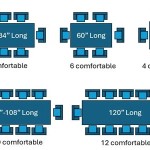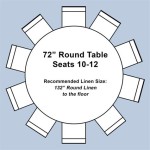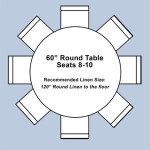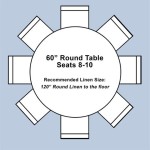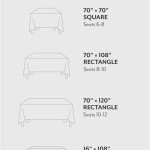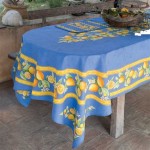Easy DIY Macrame Table Runner Pattern: A Comprehensive Guide
Macrame, the art of knotting cords or strings to create decorative and functional items, has experienced a significant resurgence in popularity. Its versatility allows for the creation of a wide range of projects, from plant hangers to wall hangings, and, notably, table runners. A macrame table runner can add a touch of bohemian chic and natural elegance to any dining space. This article provides a detailed guide to creating a simple yet striking macrame table runner, offering a free pattern suitable for beginners.
The appeal of this particular project lies in its accessibility. It requires minimal materials and employs basic macrame knots, making it an ideal starting point for individuals new to the craft. Moreover, the project is easily customizable, allowing for adaptations in length, width, color, and knot variations to suit individual preferences and décor styles. By following these instructions, even those with no prior experience can create a beautiful and functional piece of macrame art.
Materials Required for a Macrame Table Runner
The first step in embarking on this project is to gather the necessary materials. The success of the macrame table runner hinges on selecting appropriate materials that are both durable and aesthetically pleasing. The primary material is the cord, which will form the structure and design of the runner. The choice of cord depends largely on the desired look and feel of the final product. Here is a breakdown of the recommended materials:
Cord: The type and amount of cord are crucial. For this project, a single-strand or three-ply cotton cord is recommended, typically ranging in thickness from 3mm to 5mm. The quantity of cord needed will depend on the desired length of the table runner. As a general guideline, it is advisable to purchase approximately four times the desired length of the finished runner. This accounts for the shortening that occurs during knotting. For example, if a 60-inch table runner is desired, purchasing around 240 inches (20 feet) of cord per strand is recommended. For a standard table runner, needing around 20-30 strands, a considerable amount of cord will be required. Before starting any project it is recommended to calculate how much you will need to complete the task.
Scissors: A sharp pair of scissors is essential for cutting the cord cleanly and precisely. Dull scissors can fray the cord and make it difficult to create neat knots.
Measuring Tape: Accuracy in measurement is vital to ensure the table runner is the desired length and width. A measuring tape will assist in cutting the cord to the correct length and maintaining consistent knot spacing.
Mounting Surface: A stable surface to which the cords can be temporarily attached is needed. This can be a corkboard, a piece of wood, or even a sturdy table edge. The use of pins or tape will secure the cords in place during the knotting process.
Optional Embellishments: Depending on the desired aesthetic, beads, wooden rings, or other decorative elements can be incorporated into the design. These embellishments can add texture and visual interest to the finished product.
Basic Macrame Knots Used in the Table Runner Pattern
The foundation of any macrame project lies in the mastery of basic knots. For this particular table runner pattern, two fundamental knots are primarily used: the larks head knot and the square knot. Understanding and executing these knots accurately is crucial for achieving a well-defined and visually appealing table runner.
Larks Head Knot: This knot is used to attach the cords to the mounting surface or dowel rod. To create a larks head knot, fold a length of cord in half, creating a loop. Position the loop behind the mounting surface and bring the two ends of the cord forward, passing them through the loop. Pull the ends to tighten the knot, securing the cord to the surface. This knot forms the base from which other knots will be constructed.
Square Knot: The square knot is the primary knot used to create the body of the table runner. It consists of two half knots tied in alternating directions. To tie a square knot, take four cords. Designate the two outer cords as working cords and the two inner cords as filler cords. Bring the right working cord over the two middle filler cords and then under the left working cord. Next, bring the left working cord under the two middle filler cords and then over the right working cord. This completes one half of the square knot. To complete the entire square knot, repeat the process, but this time start with the left working cord. Bring the left working cord over the two middle cords and then under the right working cord. Then, bring the right working cord under the two middle cords and then over the left working cord. Pull all four cords to tighten the knot. The result is a symmetrical, square-shaped knot.
Consistent tension is crucial when tying both the larks head knot and the square knot. Maintaining even tension will ensure that the knots are uniform and the table runner has a consistent and pleasing appearance. Practice tying these knots until they become second nature, as this will greatly enhance the overall quality of the finished product.
Step-by-Step Instructions for Creating the Macrame Table Runner
With the materials gathered and the basic knots mastered, the focus shifts to the construction of the table runner. The following step-by-step instructions provide a clear and concise guide to creating the macrame table runner, ensuring a successful outcome.
Step 1: Preparing the Cords: Cut the cords to the desired length, remembering to account for the shortening that occurs during knotting. As previously mentioned, a general guideline is to cut the cords to approximately four times the desired length of the finished table runner. For a standard table runner, cut between 20 to 30 cords, depending on the desired width. For example, if a 60-inch table runner requiring 24 cords is desired, each cord should be approximately 240 inches (20 feet) long.
Step 2: Attaching the Cords: Attach the cords to the mounting surface using larks head knots. Fold each cord in half and place the loop behind the mounting surface. Bring the two ends of the cord forward through the loop and pull to tighten. Repeat this process for all the cords, ensuring they are evenly spaced along the mounting surface. The spacing between the cords will determine the overall width of the table runner.
Step 3: Creating the First Row of Square Knots: Once all the cords are attached, begin tying the first row of square knots. Take the first four cords and tie a square knot. Then, take the next four cords and tie another square knot. Continue this process across the entire row, ensuring that each knot is tied with consistent tension. This first row will establish the foundation for the rest of the table runner.
Step 4: Creating Subsequent Rows of Square Knots: For the second row of square knots, shift the starting point. Instead of using the first four cords, use the second, third, fourth, and fifth cords to tie a square knot. Then, use the sixth, seventh, eighth, and ninth cords to tie another square knot. Continue this process across the row, creating a staggered pattern. This staggered pattern will create a visually appealing and structurally sound table runner.
Step 5: Repeating the Pattern: Repeat steps 3 and 4, alternating between the straight and staggered rows of square knots, until the table runner reaches the desired length. Maintain consistent tension throughout the knotting process to ensure a uniform and even appearance.
Step 6: Finishing the Table Runner: Once the table runner has reached the desired length, there are several options for finishing the ends. One option is to simply trim the cords to a desired length, creating a fringe. Another option is to tie additional knots at the ends to create a more defined edge. Beads or other embellishments can also be added to the ends for a decorative touch. Additionally, the ends can be secured with an overhand knot, preventing the cords from fraying too much.
Step 7: Optional Customization: Throughout the process, there are opportunities to customize the table runner. Different types of cords can be used, such as colored cords or cords with varying textures. Different knot variations can also be incorporated, such as spiral knots or berry knots. Beads, wooden rings, or other embellishments can be added to the design to create a unique and personalized piece.
By following these step-by-step instructions, a beautiful and functional macrame table runner can be created. The project is both accessible to beginners and customizable to individual preferences, making it a rewarding and enjoyable crafting experience.

How To Make Macramé Table Runner Using 3 Simple Knots Macrame Tutorial

Beginner Macrame Fringed Table Runner Diy Kimenink

Make A Macrame Table Runner Tutorial The Diy Mommy

Diy Macrame Table Runner Decoration Id Wall Hanging Patterns

Diy Macrame Table Runner Tutorial Coaster

Beginner Macrame Fringed Table Runner Diy Kimenink

Macrame Table Runner Diy Decor

Beginner Macrame Fringed Table Runner Diy Kimenink

Easy Diy Macrame Table Runner Slay At Home Mother

Macrame Table Runner Boho Design Inspiration
Related Posts


